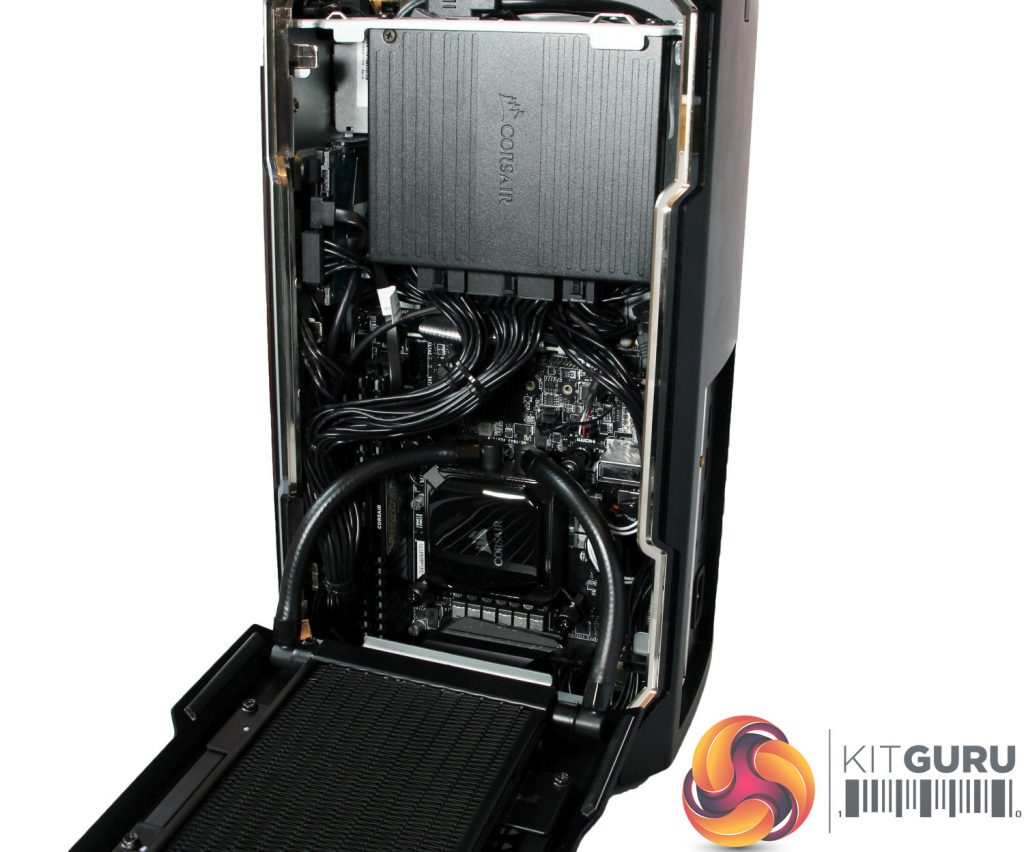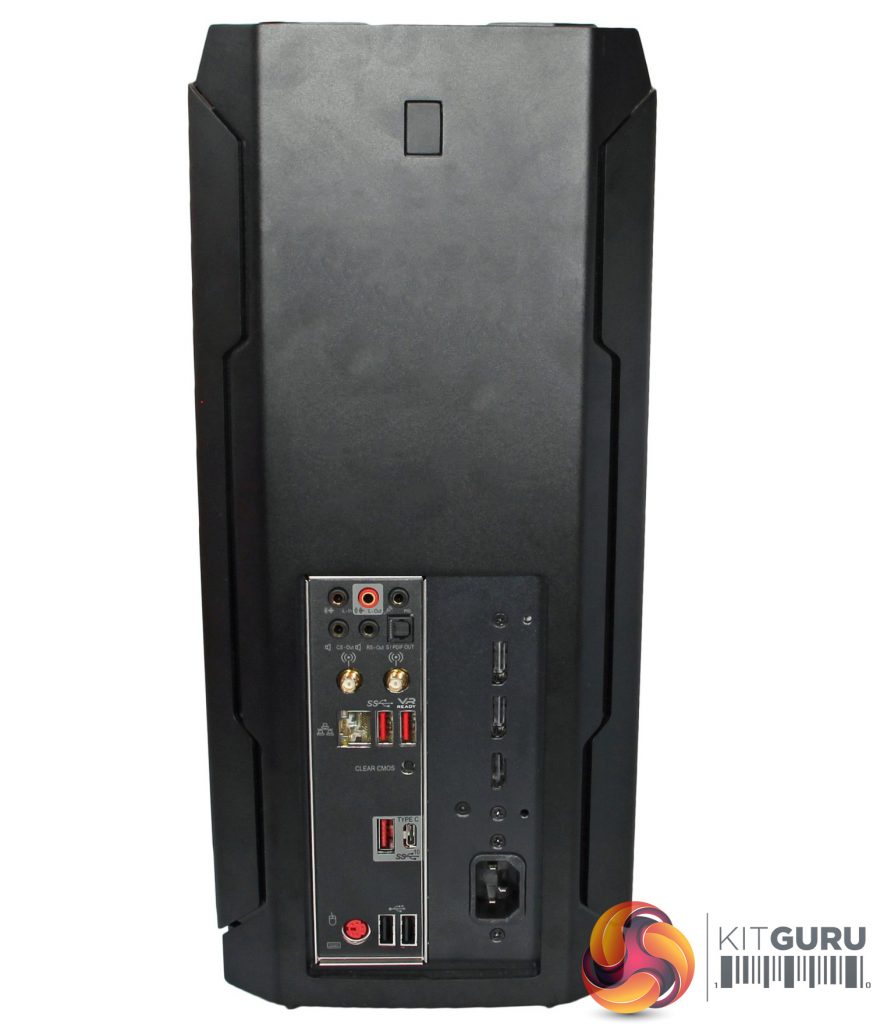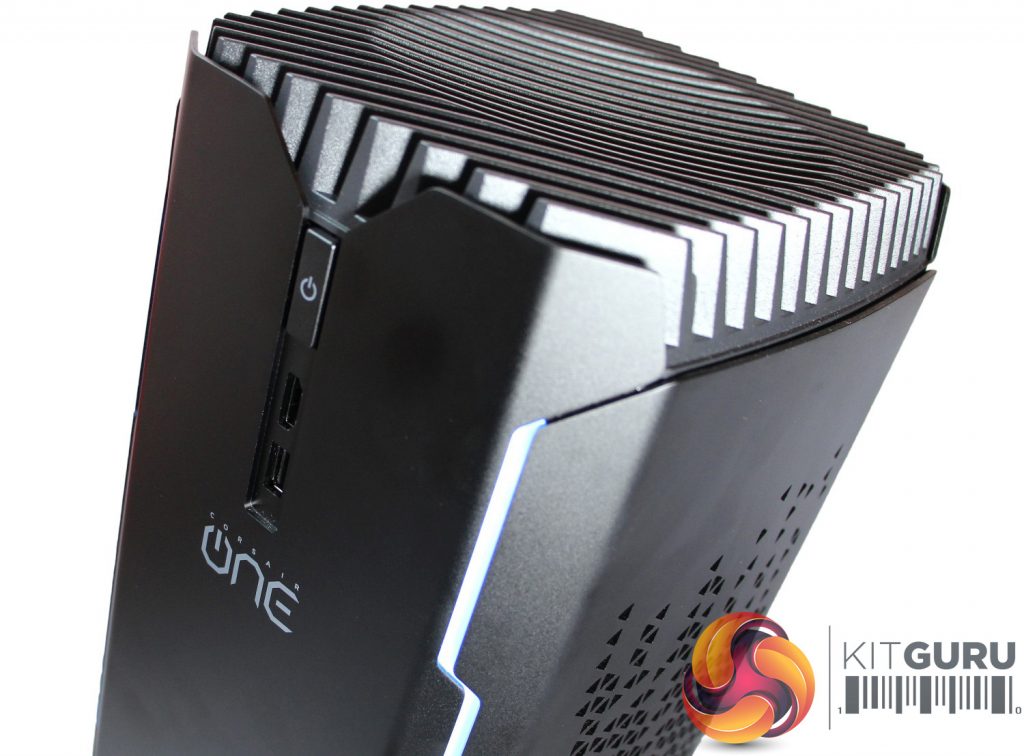Virtually every component in the Corsair has been upgraded since last year’s debut machine. The biggest change comes in the processing department, with Kaby Lake replaced by Coffee Lake silicon.
That means the i7-7700K has been replaced by an i7-8700K. That’s a big jump, because it means two more cores and four more concurrent threads. Those extra cores make the One Elite even more adept at multi-tasking and multi-threaded productivity applications, which is why Corsair is aiming this Elite version of the One at creatives as well as gamers. Only a handful of chips could be better in these situations – like the eight-core AMD Ryzen 7 1800X inside the Armari machine or the Intel Core i7-7820X inside the PC Specialist Apollo X01.
The extra cores sit alongside some competitive clock speeds. The 8700K’s stock speed of 3.7GHz is a little lower than last year’s chips, but it’s competitive with Ryzen 7 1800X, which has a 3.6GHz stock speed.
The 8700K boosts to a Turbo speed of 4.3GHz on all six cores and 4.7GHz on one core, which is better than the i7-7700K and AMD’s latest silicon.
The six-core processor is paired with 32GB of memory, which is another component that only creatives will properly use. The DDR4 runs at 2,666MHz, which is an improvement over the speeds in last year’s Corsair One, but we would have still preferred higher clock speeds – most other high-end systems use 3,000MHz memory
It’s a similar story with the system's storage. The 512GB Samsung PM961 SSD is fine and is certainly better than the SATA drive included in the original model, but Samsung’s consumer drives are a little quicker. There’s also a 2TB hard disk, which is fine.
The motherboard is based on the MSI Z370I Gaming Pro Carbon AC, which features beefed-up audio circuits with a Realtek ALC1220 codec and dual-band 802.11ac wireless.
The entire rig is powered by a Corsair SF500. It’s tiny and modular, and it has an 80 Plus Gold certification, so we have no qualms about its operation. That 500W delivery is fine, too – there’s not much headroom for any overclocking, but that’s not what this machine is designed to do anyway.
The graphics card has also been given an upgrade. The original Corsair One had a GTX 1080 graphics card, but this system has a GTX 1080 Ti.
That step up means 1,024 extra stream processors and three extra gigabytes of GDDR5X memory, bringing those totals to 3,584 and 11GB respectively. The base clock of 1,480MHz boosts to at least 1,645MHz and can attain higher speeds if the conditions are right.
None of the Corsair’s rivals will offer a significant amount of extra graphics power – the only machines that’ll outpace this rig are ones with overclocked versions of the same graphics card.
The more interesting battleground comes in processing, where eight-core chips and overclocked parts will offer a stern challenge in both single-threaded and multi-threaded tasks.
There’s no denying that the Corsair has good components, but there’s also no denying the price is high at £2799. Thankfully, the One Elite isn’t the only new machine available. Corsair’s One Pro Plus retains most of this machine’s key parts but drops down to 16GB of memory, which reduces the price to £2,549.
Corsair is also selling last year’s models at lower prices. The more expensive version has the i7-7700K and GTX 1080 alongside 32GB of memory for £2,299, while a cheaper model halves the memory to bring the price down to £2,099.
 KitGuru KitGuru.net – Tech News | Hardware News | Hardware Reviews | IOS | Mobile | Gaming | Graphics Cards
KitGuru KitGuru.net – Tech News | Hardware News | Hardware Reviews | IOS | Mobile | Gaming | Graphics Cards





